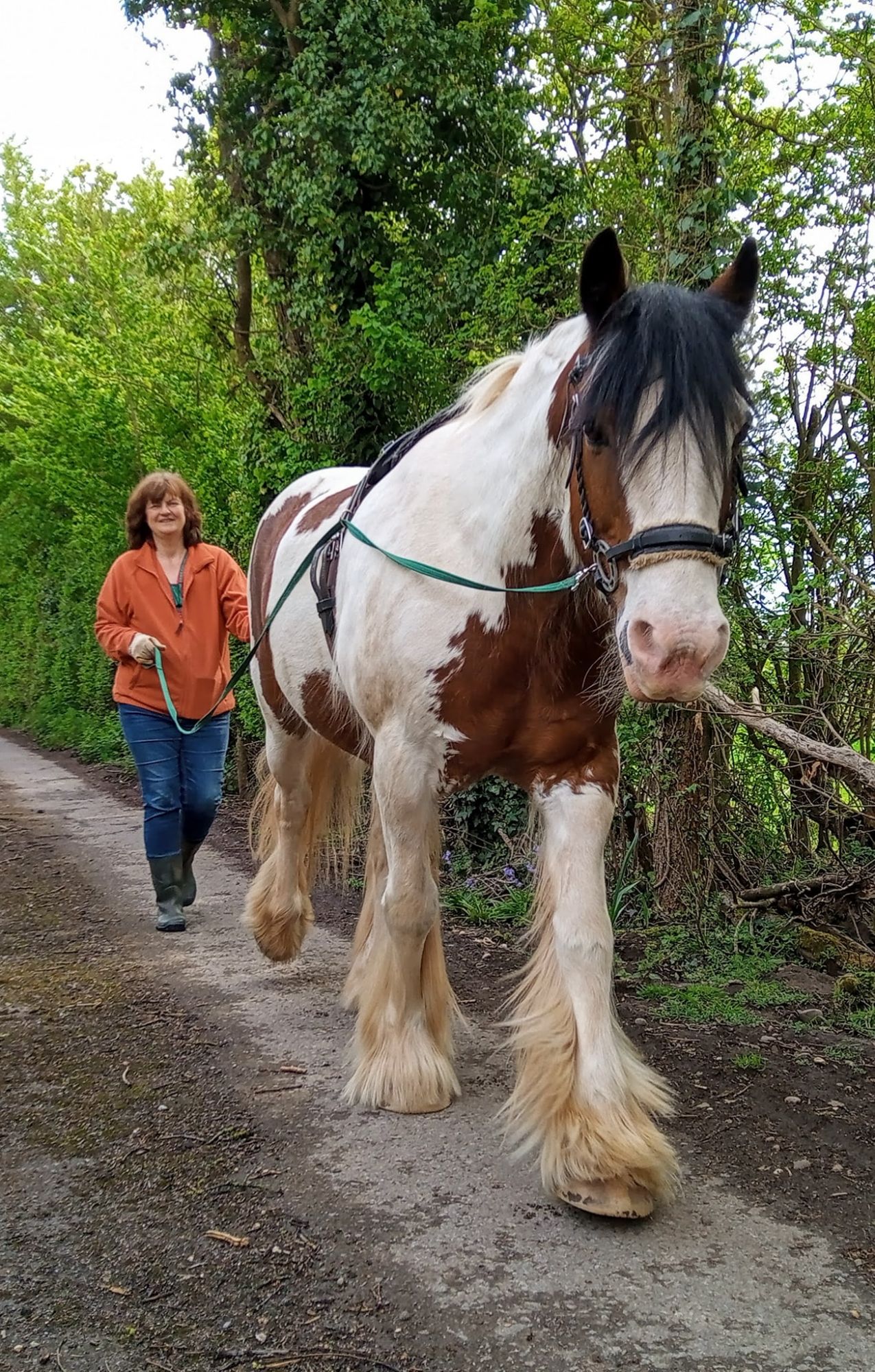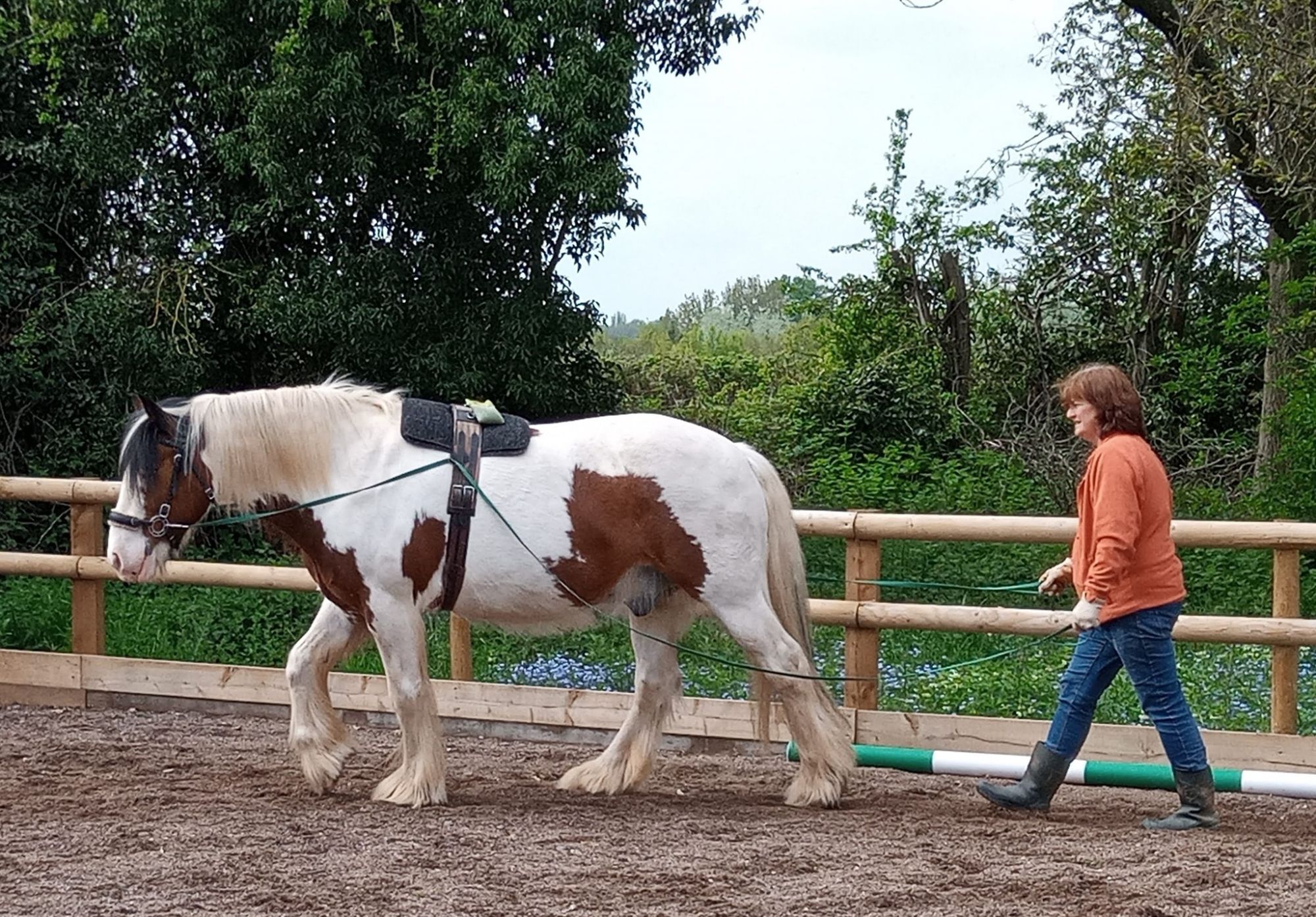Long Reining. Traditionally long reining was part of a young equines education. Sadly this skill is not widely taught at grass roots and is at risk of becoming a dying art. Yet anyone can learn.

Safety First.
If long reining is new to you and your equine it really is a very wise investment to learn how to do this correctly. We strongly suggest you book sessions with a horsemanship professional.
Before You Get Started
It is really important you and your equine are comfortable and at ease with basic leading, handling and confident working from the ground with your equine on one line before even considering two lines.
The equipment you will need for your horse is a suitable bridle (bitless or bitted). It is possible to long line using a head collar or halter, however many head collars and halters by design are loose fitting and may not be suitable if they move too freely they may rub, or move in towards the eye. It is essential whatever you choose is comfortable and suitable for long reining. If you are uncertain please take professional advice. You will also need two long lines, roller with large rings, a girth and a soft pad for under the roller. If your horse hasn’t worn this equipment before please work with a professional horsemanship practitioner to ensure you do things correctly.
Equipment for you. Gloves are a must. And we urge people to wear good non slip sturdy foot wear, and a safety helmet.
You will need a safe secure training environment when starting out long lining. A school is ideal, or part of your field set aside for training.
Some Tips
These tips are to be used alongside support from a professional of your choice.
- If you have never long reined see if you can have lessons with a professional horsemanship practitioner with a quiet experienced horse. It will help you learn how to handle the lines and how to give the right cues to the horse.
- If your equine is young or lacks confidence or is nervous, please note training to long lines requires experience so please invest in learning with a professional to ensure a successful outcome. Learning is lifelong and fun. Only ever attempt long reining if you have the knowledge, skills and are confident.
- Your equine must feel safe with the lines draped over his body and them moving. Help your equine to feel happy and safe with the feel of a line round his quarters. And not to worry if a line dangles or flaps about. This preparation cannot be rushed. Careful ethical desensitization is the name of the game. You can use positive reinforcement. It is about preparing your equine so he is not startled or worried by the lines, equipment or sensations of the equipment touching his body.
- Once your equine is happy and comfortable you can then teach him to turn. Use just one line clip it to the side of your bridle then walk down the side of your horse, drape it round his quarters and stand behind your horse. Ask him to walk on and gently using the rein ask him to turn. Repeat many times from both sides. When your horse is relaxed and happy turning left and right using just one line only then you can move on to using two lines.
- Never let your long lines get lower than above the hocks, as your horse could get tangled in the lines.
- Only when you and your equine feel ready move onto using two lines, remember there is no rushing. You can bring the second line in by at first draping it over the horses back by the roller. At this stage do not attach the second line to anything, just let it hang there. We want it to slide off and the horse have no issue (as in the desensitization). But this time you can ask your equine to walk on, on a circle using the one line that is attached. Do this in both directions as many times as you and your equine need.
- All the preparation is key to a calm relaxed partnership long lining. When you are both happy you can attach both reins, one each side of the bridle. And pass the lines through the roller rings. At this stage it is useful to have an experienced, calm and confident person helping by your horse’s head. As it can be useful to have someone walk by the side of your equine while he learns how to long rein. .
- When working on 2 lines in a circle remember not to hold the line on the outside tight, too much pressure on the outside line is confusing to the horse.
- Training including long reining can be done using positive reinforcement.

Activities and benefits
Activities to try:
- Long rein round an obstacle course / agility.
- Walking and Hiking.
- Dressage patterns. You can compete doing dressage in-hand including long reining via some Online Showing platforms.
- Long lining is the foundation to progression to driving.
- Pole work and much more.
The Benefits Include:
- As the bond, partnership and the relationship matters long reining can boost confidence and trust in equine and handler.
- It is a fantastic form of exercise for both equine and handler. It is a gentle exercise that can help as part of weight management..
- Long reining can be part of a number of activities that provide mental and physical enrichment.
- It can be done ethically using positive reinforcement.
In the photos our horse Kez is wearing an Orbitless Bitless Bridle which we find is ideal for long reining, many other non ridden activities and for riding.